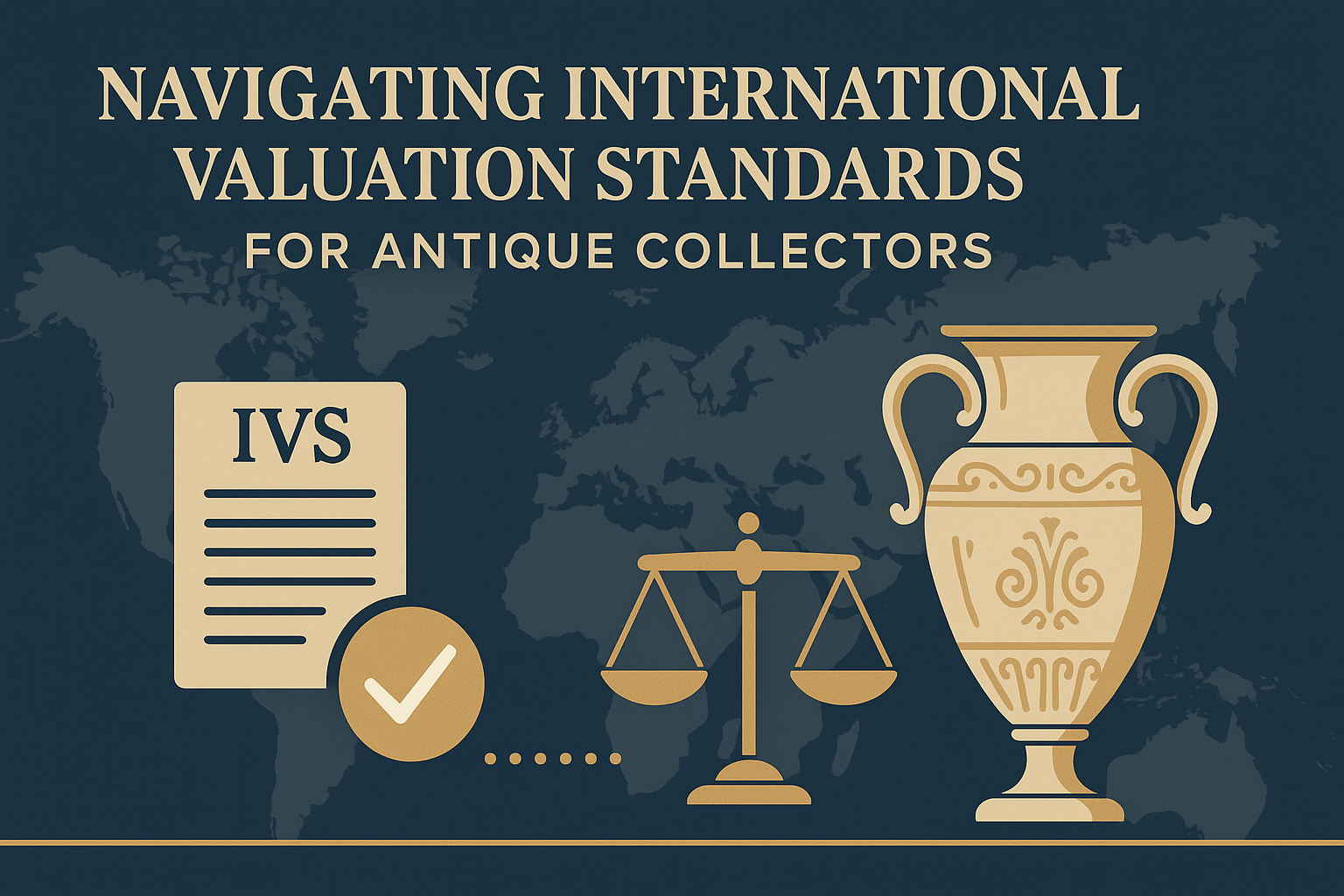Navigating International Valuation Standards for Antique Collectors: Expert Guide

Understanding and adhering to international valuation standards is crucial for antique collectors and professional appraisers alike. These standards provide consistency, accuracy, and reliability across global markets, fostering trust and facilitating transparent transactions. This article offers a clear overview of international valuation standards (IVS), why they matter, and how collectors can effectively navigate them.
Importance of International Valuation Standards (IVS): Ensuring Consistency in Antique Markets
The International Valuation Standards Council (IVSC) has established comprehensive guidelines to ensure that valuation practices are consistent and transparent worldwide. Adhering to IVS:
- Promotes Consistency: Ensures valuations are uniform, reducing discrepancies and fostering international trust.
- Enhances Transparency: Clarifies how valuation conclusions are derived, boosting buyer confidence.
- Facilitates Cross-Border Transactions: Makes it easier for collectors and institutions to engage in international trade.
Core Components of IVS for Antiques: Professional Valuation Framework
Antique collectors and appraisers should familiarize themselves with key IVS elements:
- IVS 100 - Valuation Framework: Establishes fundamental principles including objectivity, competence, and professional judgment.
- IVS 101 - Scope of Work: Defines the valuation assignment clearly, including the asset being appraised, purpose, and valuation methods.
- IVS 102 - Bases of Value: Outlines various value bases (market value, investment value, equitable value), essential for accurate valuation.
- IVS 103 - Valuation Approaches and Methods: Clarifies approaches such as the sales comparison, cost, and income methods.
- IVS 104 - Data and Inputs: Specifies the importance of accurate data collection, verification, and management in valuation processes.
Selecting the Appropriate Basis of Value: Market, Insurance, and Estate Valuations
Different valuation purposes necessitate different value bases:
- Market Value: Ideal for sale or auction purposes, representing an item's worth in a fair and open market.
- Insurance Value: Often aligned with replacement cost, ensuring adequate coverage against loss or damage.
- Estate Value: Usually reflecting market or liquidation values for estate planning and inheritance.
AntiquesApp.pro aligns with IVS by leveraging robust market databases and standardized valuation methods to deliver precise AI-driven valuation reports.
Key Valuation Approaches Explained: Sales Comparison, Cost, and Income Methods
- Sales Comparison Approach:
- Most widely used method, comparing recent sales of similar antiques.
- Effective for items with sufficient market transaction history.
- Cost Approach:
- Evaluates the replacement or reproduction cost of an item.
- Useful when direct market comparisons are limited or unavailable.
- Income Approach:
- Relevant for antiques generating regular income, such as rentals for displays or staging.
Best Practices in Adhering to IVS: Professional Standards for Antique Appraisals
Collectors and appraisers can adopt several best practices:
- Regular Training: Stay updated with IVSC guidelines and participate in professional valuation training.
- Document Methodology Clearly: Ensure valuation reports detail methodologies, assumptions, and conclusions transparently.
- Use of Standardized Documentation: Consistent documentation, such as the Object ID form, enhances clarity and standardization.
Leveraging Technology for IVS Compliance: AI Tools for Standardized Valuations
Technology simplifies IVS adherence significantly:
- AI and Data Analysis: Tools like AntiquesApp.pro use AI-driven analysis for accurate valuations aligned with international standards.
- Cloud-Based Documentation: Digitized, accessible records ensure compliance with IVS standards and facilitate easy updates.
Practical Steps for Collectors and Appraisers: Implementing Valuation Standards
- Understand and Identify the Valuation Purpose: Clearly define whether valuation is for sale, insurance, estate planning, or loan collateral.
- Collect Comprehensive Data: Gather thorough, accurate details on antiques, including provenance, condition, and market comparisons.
- Employ Qualified Professionals: Engage appraisers knowledgeable about IVS to ensure professional and accurate valuations.
Conclusion: Creating Value Through International Standards Compliance
Navigating International Valuation Standards enhances accuracy, credibility, and marketability of antiques, benefiting both collectors and professional appraisers. By understanding IVS core components, selecting appropriate valuation bases, and leveraging advanced technology such as AntiquesApp.pro, stakeholders can achieve reliable and globally recognized valuations. Consistently applying these standards not only ensures compliance but also maximizes the value and integrity of antique collections internationally.
AntiquesApp.pro incorporates international valuation standards into its AI-driven appraisal system, providing accurate and globally recognized valuations for your antique treasures.
